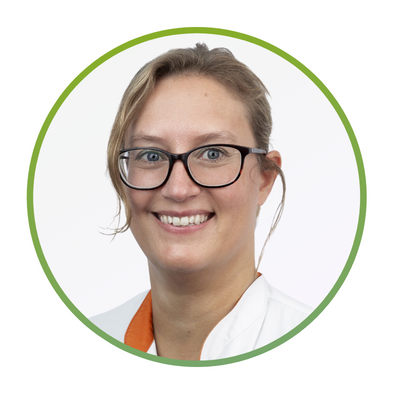
 Questions to Donal McLornan
Questions to Donal McLornan
- Introduce yourself and your role(s) and position(s) within EBMT and outside of EBMT
Hello, my name is Donal McLornan and I am based at UCLH, London, where we have the largest combined transplant and academic CAR T program in the UK. My focus is predominantly on allogeneic HCT, cellular therapies and myeloid disorders. I am delighted to be the current chair of the Chronic Malignancy Working Party (CMWP) of the EBMT and a member of the scientific council of the EBMT Board. I have been lucky to have been involved with the EBMT CMWP for many years and was the previous Myeloproliferative Neoplasm (MPN) sub-committee chair for the last four. Additionally, I chair the UK wide National Cancer Research Institute MPN group, which leads on MPN academic and commercial trial activity and research strategies nationally, and also act as the current vice chair of the EHA global outreach committee. In addition to my focus on allogeneic HCT and cell therapy, I have a particular interest in Myelofibrosis and MDS/MPN overlap syndromes.
- What are the main activities - in terms of research and education - that your Working Party has been leading? And is there a memorable project that you would like to highlight?
We have a very active and large Working Party, covering stem cell transplantation and cellular therapy for multiple diseases that come under the umbrella of ‘chronic malignancies’ - MPN, Plasma cell disorders, MDS and MDS/MPN overlap syndromes, CML and chronic lymphoid malignancies (CLL/PLL/HCL etc). As you can imagine with all the novel and emerging therapies within each of these arenas, there remains so much for us to learn about how these new, and indeed existing, agents fit into the transplant/ cell therapy algorithms. We are constantly looking to optimise pre, peri- and indeed post- cellular therapy/ transplant strategies to improve patient outcomes. Output from the CMWP certainly highlights the power of collaborative working within the EBMT and our large network of centres. For example, over the last few years the CMWP has led on global guidelines aiding definition and management strategies for relapse post allograft for Myelofibrosis (MF); an international guideline on optimal management of MF-related splenomegaly prior to transplant and numerous surveys of contemporary transplantation practice that help identify areas of unmet need that could benefit from consensus-based approaches. We have a large and very active portfolio of retrospective studies across all of the disease groups listed above. By way of example, these include studies on outcomes dependent on GVHD prophylaxis choice in MDS, outcomes for VEXAS patients undergoing allo-HCT, how co-morbidities influence outcome post MF allo-HCT, use of AI modelling to determine outcomes post allo-HCT in MF, the role of autografting in PLL, the role of haploidentical allo-HCT for CML and EBMT derived scores predicting early relapse in MM, amongst many others. We are always keen for new and innovative study proposals.
- And are you facing any challenges or trends within your field that are affecting any current/on-going projects within your Working Party?
There is a big focus on present on updating and migration of the EBMT Registry database and this offers the opportunity for updating of data capture forms which is very welcome. The new database will offer many new benefits to both the Working Parties and participating centres. For example, in the era of routine genomic annotation, we will need to robustly capture this data to facilitate further contemporary studies across the disease areas within the CMWP.
- What are your main goals in the near future?
Our main drive at the minute is completing as many of the existing studies that are within our portfolio for presentation and publication. This will provide capacity to focus on many of the exciting new studies under consideration. We want to connect further not only with existing members but to build our dynamic membership base by attracting new members. In addition, we want to build upon the excellent CMWP educational offerings through enhanced web-based and ‘in person’ events, utilising a range of interactive digital platforms, use of challenging clinical case scenario presentations and further educational sessions led by medical, nursing, data management and statistician colleagues. Lastly, one major goal across all the WPs is the ability to run EBMT led prospective trials – this is a longer term but highly desirable goal for all of us in the field.
- Can you tell us what membership of your Working Party looks like? What do members of your Working Party get to do?
We bring together disease- and transplant/ cell therapy medics, nurses, data management and programming experts and statisticians which provides the perfect springboard for investigator led studies. We work across the various CMWP subcommittees with regular disease area focussed meetings where we prioritise the current studies, discuss the data findings and prepare for abstract submission and publication. We run regular educational events where members can contribute to the lectures and debates and more recently have made each of these diseases focussed. For example, in January 2023 we will have our virtual CMWP education event focussed on MDS and MDS/MPN (January 21st, 2023) and in autumn 2023 (September 29th-October 1st) we will have a joint business and educational meeting (focus on plasma cell dyscrasias) in Hamburg alongside the CTIWP (Chair, Annalisa Ruggeri). Please mark these in your diary as would really be great to see you there!
- What would you like to say to encourage young investigators / trainees to join your Working Party?
Simply, come join us! We want to expand the membership of our Working Party with enhanced opportunities for younger colleagues in all disciplines to lead on studies in parallel to provision of mentorship. The breadth of diseases covered means many opportunities for focussed and potentially practice changing studies. You will meet new friends and enjoy the joint drive for scientific and clinical excellence in the transplant/ cell therapy arenas. We are keen to build future capacity and capability across all professions and the entirety of the CMWP sub-committees!
Please do email me, Donal McLornan and the co-secretaries, Dr. Kavita Raj and Dr. Joanna Drozd- Sokolowska, if interested.
 Questions to Maaike de Ruijter
Questions to Maaike de Ruijter
- Introduce yourself and your role(s) and position(s) within EBMT and outside of EBMT
My name is Maaike de Ruijter and since a few years the CMWP Nurse. I just started with a new position of Working Party lead nurse. This is a recently created role to support the WP nurses into their role and to assist with project development, education, research and to provide peer support to the WP nurses.
Beside that I am working as a nurse practitioner in Amsterdam. Where I am mainly focused on the care of patients diagnosed with multiple myeloma and lymphoma, who are treated with high- dose chemotherapy and autologous stem cell therapy or CART. I am also a member of the palliative care/supportive care team.
In my work as nurse practitioner and in my positions within the EBMT, I am very motivated to collaborate with colleagues who are involved in the cure and care for patients with a haematological disease. By organising educational events we can meet, discuss our experiences, discuss research projects, provide education and support each other.
- What are the main activities - in terms of research and education - that your Working Party has been leading? And is there a memorable project that you would like to highlight?
The CMWP consists of 5 subcommittees, focused on Myelodysplastic Syndroms (including CMML), Plasma Cell Disease (including CART), Philadelphia-negative Myeloproliferative Neoplasm, Chronic Myeloid Leukaemia and Chronic Lymphocytic Leukaemia.
All the subcommittees are involved in research projects and in organising the educational day, planned twice a year.
As the CMWP nurse, I am mostly involved in education. We had a wonderful nurses meeting in Istanbul. Due to covid we couldn’t plan a new live meeting in these last years. But we are planning to organise a nurses educational meeting in Hamburg, in September 2023.
- And are you facing any challenges or trends within your field that are affecting any current/on-going projects within your Working Party?
I think we can all say that new trends in the hematology field must be the involvement of CAR-T/cellular therapies. In the CMWP it is a new topic for the Plasma Cell Disease subgroup. It is also a promising and exciting treatment option for patients with multiple myeloma.
4. What are your main goals in the near future?
For patients diagnosed with multiple myeloma there are so many new treatment options, in the first line but also for relapsed and refractory multiple myeloma. I am interested in the effect on quality of life for patients with multiple myeloma, undergoing years of treatment. We know that high dose chemotherapy and autologous transplantation is possible for elderly patients (>60/65 year), that it improves OS en PFS, though what is the effect on quality of life? My goal in the future is looking for a way to examine that. Not focused on excluding elderly patients for intensive treatment, but on what level patients can use more support to have a better quality of life and have better outcomes.
It can also be a topic on the educational meetings, impact of treatment on quality of life, and how to give patients the best support during treatment.
5. Can you tell us what membership of your Working Party looks like? What do members of your Working Party get to do?
I am pleased to have the opportunity to be the Working Party nurse of the CMWP, a group of passionate professionals who are very driven to take education en research to a higher level, working in a team. In my role as working party nurse I am part of that team, gives me the opportunity to organize parallel nursing sessions on the educational days and can brainstorm with me about starting a research project. We have meetings twice a year, focused on the research projects of the CMWP group and an educational event.
6. What would you like to say to encourage young investigators / trainees to join your Working Party?
Being a member of the CMWP provides the opportunity to be part of a group of enthusiastic physicians, nurse and researchers. Be part of research projects en educational events.
We are looking forward to welcome you to the EBMT Chronic Malignancies Working Party and our educational events.